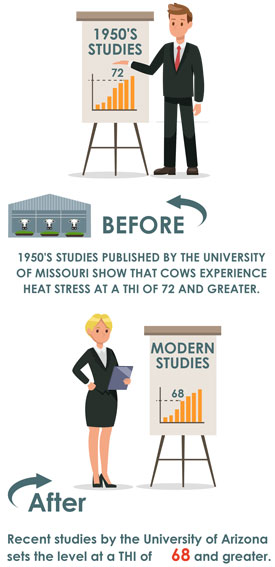The U.S. Dairy Industry
 According to the International Union of Food (IUF) and the World Atlas, the United States dairy industry consistently ranks in the top ten globally in terms of milk production and top three in exports of dairy products. Furthermore, it represents more than one tenth of the total world milk production. As of 2010, U.S. exports of cheese, whey products, lactose and other dairy products were valued at $3.71 billion. The Southwest region of the U.S. produces the greatest volume of milk and has 2.8 million dairy cows within the area. This region produced 22,846 pounds of milk per cow and has 2,827 licensed dairy herds with an average of 973 cows per herd. The EU is also a major milk producer, making up 24% of global production. Globally, the dairy industry is trending towards dairies with more milk produced per cow, which means that cows need to be healthier and in peak milking condition. Production per cow on both larger and smaller operations continues to increase because farmers are culling lower producing cows and finding more efficient operations for keeping cows healthy and producing milk.
According to the International Union of Food (IUF) and the World Atlas, the United States dairy industry consistently ranks in the top ten globally in terms of milk production and top three in exports of dairy products. Furthermore, it represents more than one tenth of the total world milk production. As of 2010, U.S. exports of cheese, whey products, lactose and other dairy products were valued at $3.71 billion. The Southwest region of the U.S. produces the greatest volume of milk and has 2.8 million dairy cows within the area. This region produced 22,846 pounds of milk per cow and has 2,827 licensed dairy herds with an average of 973 cows per herd. The EU is also a major milk producer, making up 24% of global production. Globally, the dairy industry is trending towards dairies with more milk produced per cow, which means that cows need to be healthier and in peak milking condition. Production per cow on both larger and smaller operations continues to increase because farmers are culling lower producing cows and finding more efficient operations for keeping cows healthy and producing milk.
Regional Challenges
In regions such as the Southwest U.S., as well as global regions with similar climates, year-round temperatures hover around 70 degrees Fahrenheit (21 degrees Celsius) during winter and the summers can top 120 degrees Fahrenheit (49 degrees Celsius). These conditions often make maintaining healthy cows quite difficult. In more moderate climates a dairy facility design may contribute to the same problems, raising already warm outdoor temperatures within enclosed structures.
Heat Stress in Cows
A dairy cow needs to maintain its core body temperature within a very narrow range from 101.3 to 102.8 degrees Fahrenheit (38.6 to 39.3 degrees Celsius). It can be very difficult for cows to maintain a healthy temperature when their environment is not designed to keep it in the optimal range. When the air temperature is higher than the cow’s core body temperature, heat flows into the cow and is absorbed. This can lead to severe problems of overheating, which leads to poor milk production, illness, and problems with reproduction, particularly during the transition period. High producing dairy cows are far more affected by extreme heat than lower producing cows. For example, Holstein cows, the most prominent of dairy breeds and excellent milk producers, are less tolerant to heat than Jersey cows. Lactating cows are especially susceptible compared to dry cows because of the additional metabolic heat generated during lactation. Every dairy farmer knows that lactating cows are the backbone of their business, so it is crucial to keep these cows in top condition.
Cooling Cows in Dairies Heat Challenges and Stress Humidity in Loafing Areas



